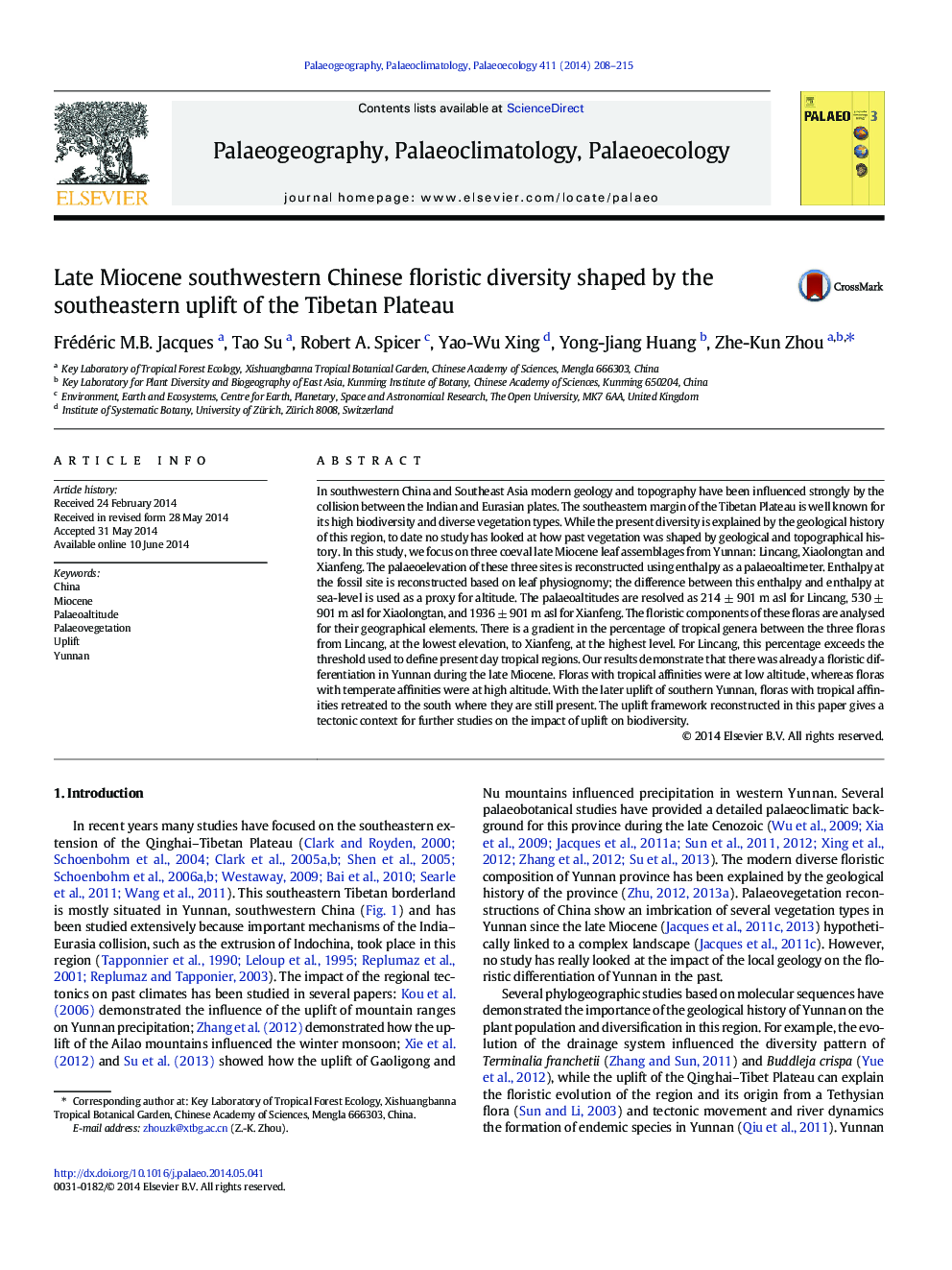| کد مقاله | کد نشریه | سال انتشار | مقاله انگلیسی | نسخه تمام متن |
|---|---|---|---|---|
| 6350050 | 1622179 | 2014 | 8 صفحه PDF | دانلود رایگان |
- Miocene palaeoelevation of southeastern Tibetan margin is reconstructed.
- Northern Yunnan site is already uplifted, southern sites are not.
- Yunnan Neogene uplift is diachronous.
- Vegetation types are already differentiated in Yunnan in Miocene.
- Vegetation in Yunnan has changed in response to uplift.
In southwestern China and Southeast Asia modern geology and topography have been influenced strongly by the collision between the Indian and Eurasian plates. The southeastern margin of the Tibetan Plateau is well known for its high biodiversity and diverse vegetation types. While the present diversity is explained by the geological history of this region, to date no study has looked at how past vegetation was shaped by geological and topographical history. In this study, we focus on three coeval late Miocene leaf assemblages from Yunnan: Lincang, Xiaolongtan and Xianfeng. The palaeoelevation of these three sites is reconstructed using enthalpy as a palaeoaltimeter. Enthalpy at the fossil site is reconstructed based on leaf physiognomy; the difference between this enthalpy and enthalpy at sea-level is used as a proxy for altitude. The palaeoaltitudes are resolved as 214 ± 901 m asl for Lincang, 530 ± 901 m asl for Xiaolongtan, and 1936 ± 901 m asl for Xianfeng. The floristic components of these floras are analysed for their geographical elements. There is a gradient in the percentage of tropical genera between the three floras from Lincang, at the lowest elevation, to Xianfeng, at the highest level. For Lincang, this percentage exceeds the threshold used to define present day tropical regions. Our results demonstrate that there was already a floristic differentiation in Yunnan during the late Miocene. Floras with tropical affinities were at low altitude, whereas floras with temperate affinities were at high altitude. With the later uplift of southern Yunnan, floras with tropical affinities retreated to the south where they are still present. The uplift framework reconstructed in this paper gives a tectonic context for further studies on the impact of uplift on biodiversity.
Journal: Palaeogeography, Palaeoclimatology, Palaeoecology - Volume 411, 1 October 2014, Pages 208-215
